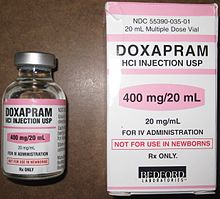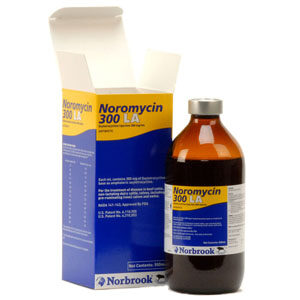Dopram
Contraindications
It should not be used in animals with certain conditions: Severe Hypertension: The drug may exacerbate high blood pressure. In animals predisposed to seizures, Dopram injection may increase the risk of triggering a seizure. Dopram
Cardiac Arrhythmias: dopram 100mg may cause irregular heart rhythms in some animals, especially if used in
Head Trauma or Stroke: Stimulating breathing in animals with brain injuries can lead to increased intracranial pressure.
Seizure Disorders: As it may lower the seizure threshold, animals with known seizure disorders should avoid its use unless absolutely necessary.
Mechanical Blockage of the Airways: If an animal’s airway is physically blocked, It will not be effective in restoring breathing and may worsen the situation.
Veterinary Applications
Neonatal Use: it is often given to newborn animals (foals, puppies, and kittens) that experience difficulty breathing after birth. It helps them to initiate breathing if they are struggling or experiencing apnea (temporary cessation of breathing).
During Surgery Recovery: Anesthetics can depress the respiratory system, and Dopram is commonly used to hasten the return to normal breathing after surgical procedures.
Emergency Care: In cases of near respiratory arrest or severe respiratory depression, it may be used as part of emergency care protocols.
Usage in Different Species
Dogs and Cats: Often used in emergency or post-surgical settings to stimulate respiration.
Horses: Particularly useful in large animals like horses for recovering from anesthesia or managing respiratory issues post-surgery or trauma.
Neonatal Care: Vital in ensuring that newborn animals with respiratory distress can establish normal breathing patterns.
dopram 100mg (doxapram hydrochloride) is an essential respiratory stimulant in veterinary medicine, primarily used to treat animals experiencing respiratory depression, especially after anesthesia or in emergency situations. It is safe when used under veterinary supervision, but care must be taken regarding its dosage, side effects, and potential contraindications. Dopram injection, dopram 100mg
Dopram 100mg
Dopram (active ingredient: doxapram hydrochloride) is a potent respiratory stimulant used in veterinary medicine to stimulate breathing in animals. It is commonly used in emergency situations, particularly to revive animals following anesthesia, in cases of respiratory depression, or to assist newborns having difficulty breathing. Dopram injection, dopram 100mg
What is Dopram?
Dopram is a respiratory stimulant. Its active compound, doxapram, acts on the respiratory centers in the brain, increasing the rate and depth of breathing. It is administered to animals experiencing respiratory distress due to anesthesia, trauma, or other conditions that suppress breathing.
Forms of Dopram
Dopram Injection: This is typically available in 20 mg/ml or 40 mg/ml concentrations. The injection can be given intravenously (IV), intramuscularly (IM), or subcutaneously (SC).
Dopram 100 mg: This indicates a dosage concentration commonly used in injectable forms.
Dopram Vet: This veterinary-specific formulation is used in various species, including dogs, cats, horses, and neonatal animals.
Uses of Dopram
Stimulating Breathing Post-Anesthesia: It is often used to stimulate breathing in animals recovering from anesthesia, especially if they experience delayed recovery or respiratory depression.
Newborn Respiratory Distress: It is frequently used in neonates, especially puppies, kittens, and foals, that are struggling to breathe after birth.
Respiratory Depression: In cases where respiratory function is compromised (e.g., due to head trauma or certain toxicities), Dopram can be used to help restore normal breathing.
Emergency Resuscitation: In some emergency settings, It is used to revive animals that are in respiratory arrest or near-arrest conditions.
Mechanism of Action
Doxapram, the active ingredient in Dopram, stimulates the medullary respiratory centers in the brain, leading to an increase in the rate and depth of breathing. It works by:
Exciting Chemoreceptors: Doxapram triggers the chemoreceptors in the carotid arteries and aorta, which detect changes in blood oxygen levels and respond by stimulating breathing.
Increasing Carbon Dioxide Sensitivity: It enhances the body’s response to elevated levels of carbon dioxide (CO2) in the blood, which naturally triggers the urge to breathe.
Dosage and Administration
The dosage of it depends on the species, weight, and condition of the animal being treated. It is typically administered intravenously for the fastest effect, but intramuscular or subcutaneous injections can also be used in certain cases.
General Dosage Guidelines (to be administered by a veterinarian):
Dogs and Cats: 0.5 to 2.5 mg/kg, administered intravenously.
Horses: 0.5 to 1 mg/kg, intravenously.
Newborn Animals (Puppies/Kittens/Foals): A smaller dose is usually given, based on the neonate’s weight and condition.
It is important to follow the veterinarian’s instructions carefully, as overdosing can cause adverse effects.
Precautions and Side Effects
While Dopram is generally safe when used as directed, there are some potential side effects and precautions to consider:
Overstimulation of Breathing: In rare cases, it may cause hyperventilation (excessive breathing), leading to respiratory alkalosis (a condition where blood pH becomes too basic).
Hypertension: Because it increases respiration, it can also cause a rise in blood pressure, which may be a concern for animals with underlying cardiovascular conditions.
Seizures: In animals predisposed to seizures, Dopram injection may increase the risk of triggering a seizure.
Cardiac Arrhythmias: dopram 100mg may cause irregular heart rhythms in some animals, especially if used in high doses.
Tachycardia: An increased heart rate (tachycardia) is another possible side effect, especially in high doses.




Reviews
There are no reviews yet.